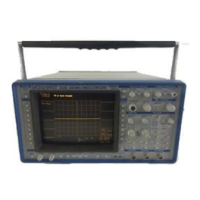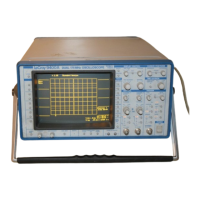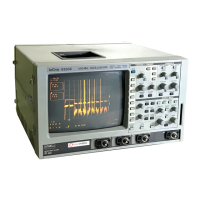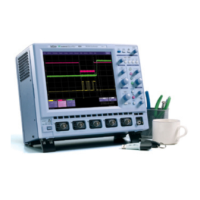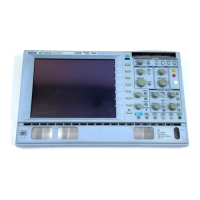2
ABOUT REMOTE CONTROL
GPIB IMPLEMENTATION
STANDARD
PROGRAM MESSAGES
Two modes of operation are available in the oscilloscope. The in-
strument may be operated either manually, by using the
front-panel controls, or remotely by means of an external control-
ler (which is usually a computer, but may be a simple terminal).
This Remote Control Manual describes how to control the oscillo-
scope in the remote mode. For explanations on how to manually
set front-panel controls, refer to the Operator’s Manual.
The oscilloscope is remotely controlled via either the GPIB (Gen-
eral Purpose Interface Bus) or the RS-232-C communication
ports. Whenever the rear-panel GPIB address switches are set be-
tween 0 and 30, control is via GPIB; when they are at 31 or above,
control is via RS-232-C. The instrument can be fully controlled in
remote mode. The only actions which cannot be performed re-
motely are switching on the instrument or setting the remote
address.
This section introduces the basic remote control concepts which
are common to both RS-232-C and GPIB. It also presents a brief
description of remote control messages.
Sections 3 and 4 explain how to send program messages over the
GPIB or the RS-232-C interfaces, respectively. Section 5 alpha-
betically lists all the remote control commands. Section 6 is a
detailed description and tutorial of the transfer and format of
waveforms, whereas Section 7 explains the use of status bytes for
error reporting. Appendix A shows some complete programming
examples. Appendix B contains a printout of a waveform tem-
plate.
The remote commands conform to the GPIB IEEE 488.2 stan-
dard
1.
This standard may be seen as an extension of the
IEEE 488.1 standard which dealt mainly with electrical and me-
chanical issues. The IEEE 488.2 recommendations have also
been adopted for RS-232-C communications whenever applica-
ble.
To remotely control the oscilloscope the controller must send pro-
gram messages which conform to precise format structures. The
instrument will execute all program messages which are in the cor-
rect form and ignore those where errors are detected.
1. ANSI/IEEE Std. 488.2-1987, "IEEE Standard Codes, Formats, Protocols, and Common Commands", The
Institute of Electrical and Electronics Engineers Inc., 345 East 47th Street, New York, NY 10017, USA.
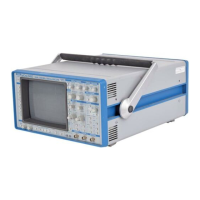
